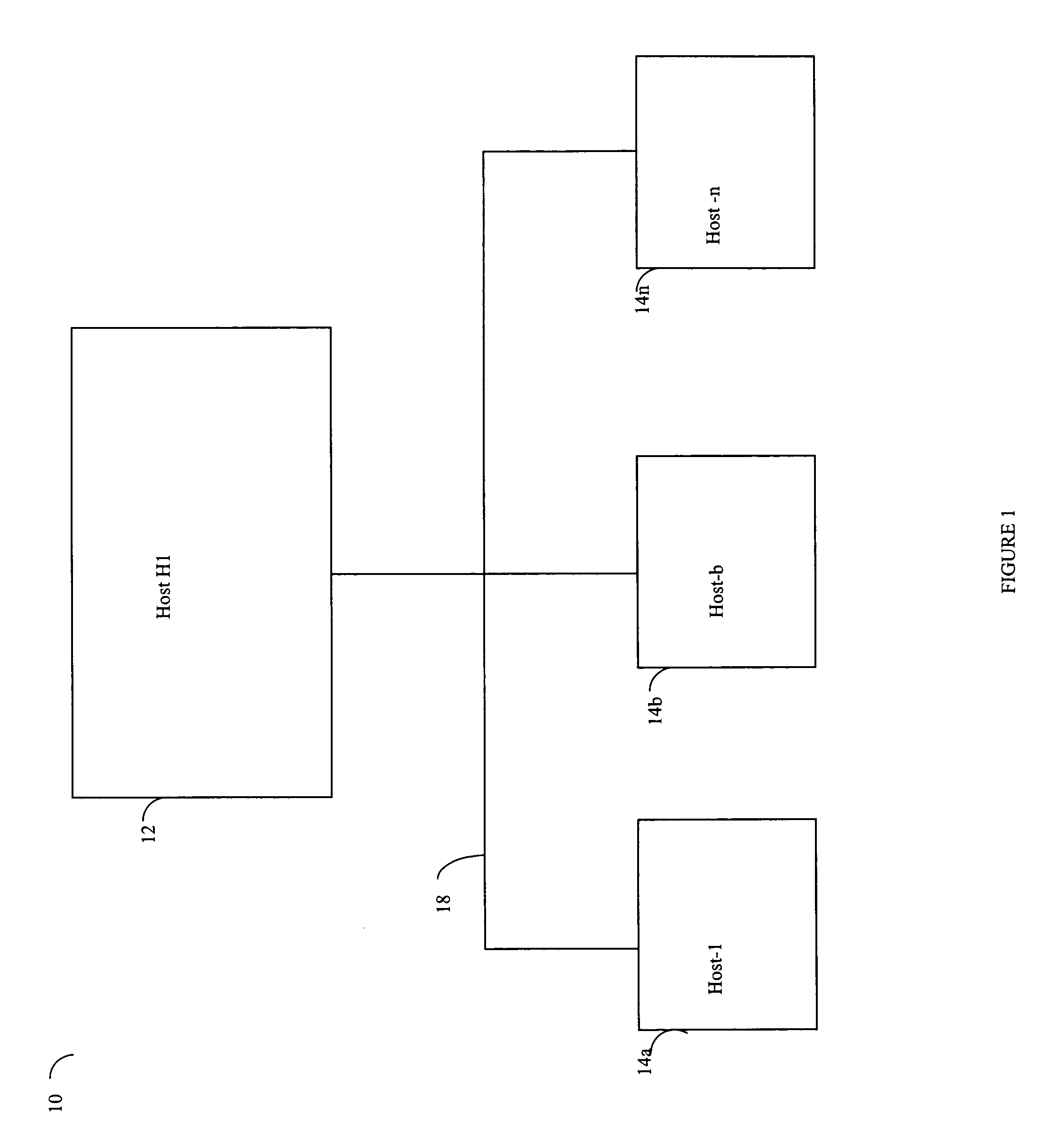Network security planning architecture
a network security and planning technology, applied in the field of network security, can solve the problems of increasing the risk of errors, reducing the security of the network, so as to increase the knowledge of the attacker, increase the privilege of the attacker, and increase the access of the attacker
- Summary
- Abstract
- Description
- Claims
- Application Information
AI Technical Summary
Benefits of technology
Problems solved by technology
Method used
Image
Examples
Embodiment Construction
)
[0050]Referring now to FIG. 1, shown is an example of an embodiment of a network according to the present invention. The network 10 includes a host 12 connected to other hosts 14a–14n through communication medium or interconnection 18. In this embodiment of the network 10, the hosts 14a–14n may access the host 12 in performing requests such as, for example, data requests. The communication medium 18 may be any one of a variety of networks or other type of communication connections as known to those skilled in the art. The communication medium 18 may be a network connection, bus, and / or other type of data link, such as a hardwire, wireless, or other connection known in the art. For example, the communication medium 18 may be the Internet, an intranet, network or other connection(s) by which the hosts 14a–14n may access and communicate with the host 12, and may also communicate with others included in the network 10.
[0051]Each of the hosts 14a–14n and the host 12 included in the netw...
PUM
 Login to View More
Login to View More Abstract
Description
Claims
Application Information
 Login to View More
Login to View More - R&D
- Intellectual Property
- Life Sciences
- Materials
- Tech Scout
- Unparalleled Data Quality
- Higher Quality Content
- 60% Fewer Hallucinations
Browse by: Latest US Patents, China's latest patents, Technical Efficacy Thesaurus, Application Domain, Technology Topic, Popular Technical Reports.
© 2025 PatSnap. All rights reserved.Legal|Privacy policy|Modern Slavery Act Transparency Statement|Sitemap|About US| Contact US: help@patsnap.com



